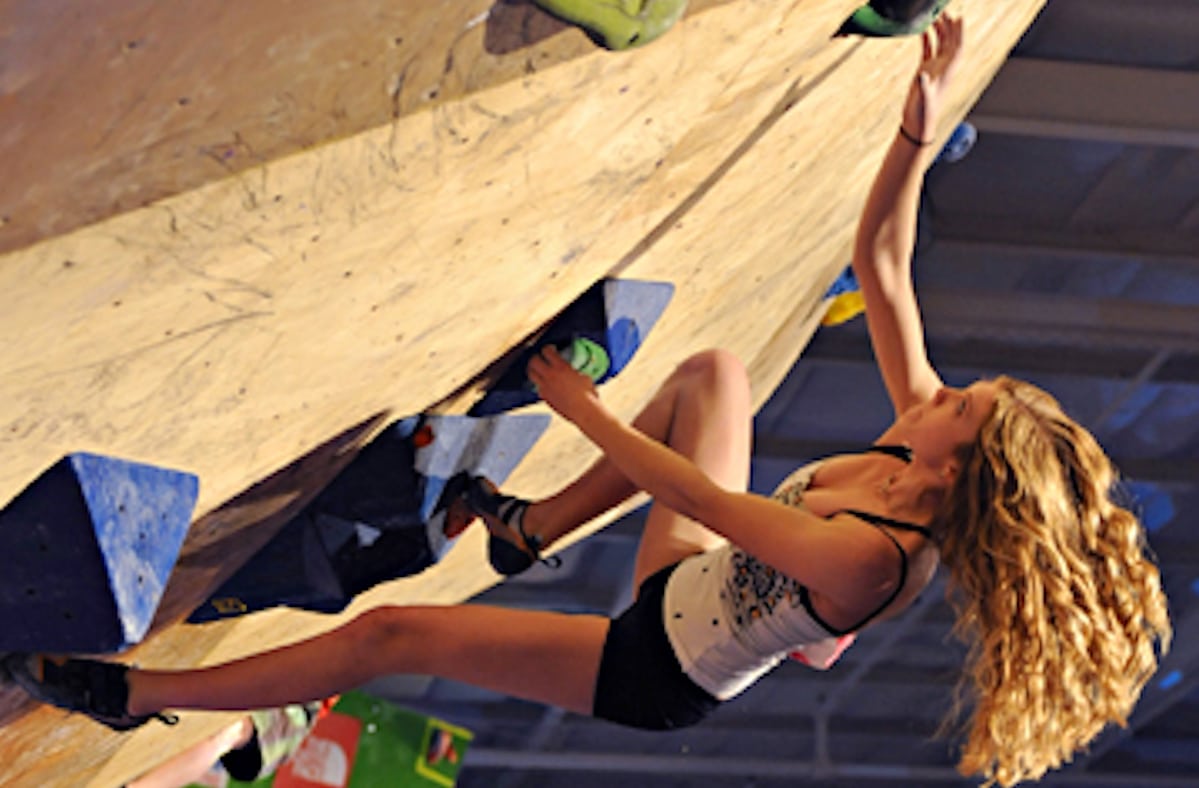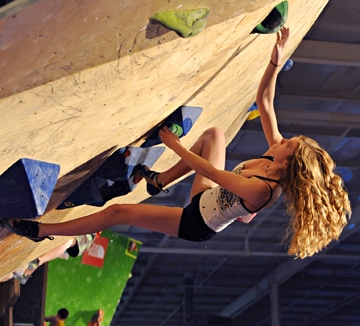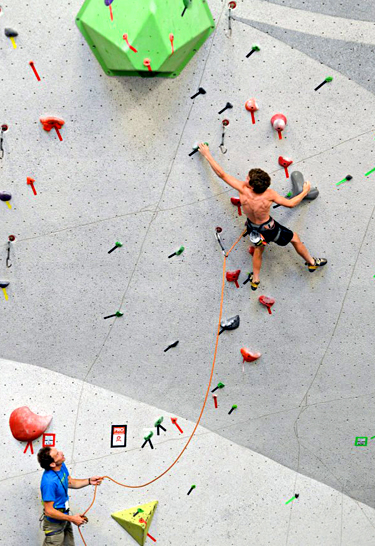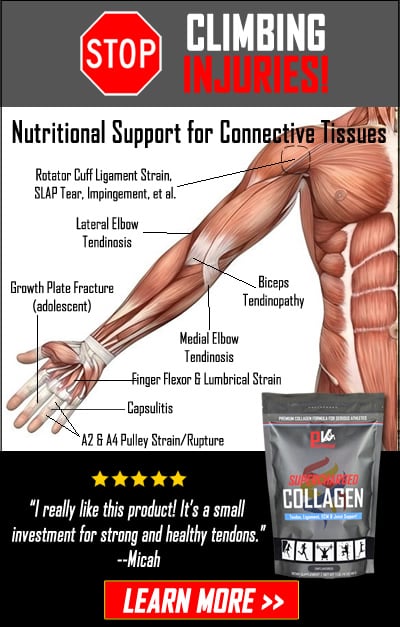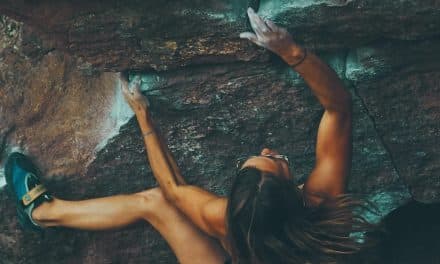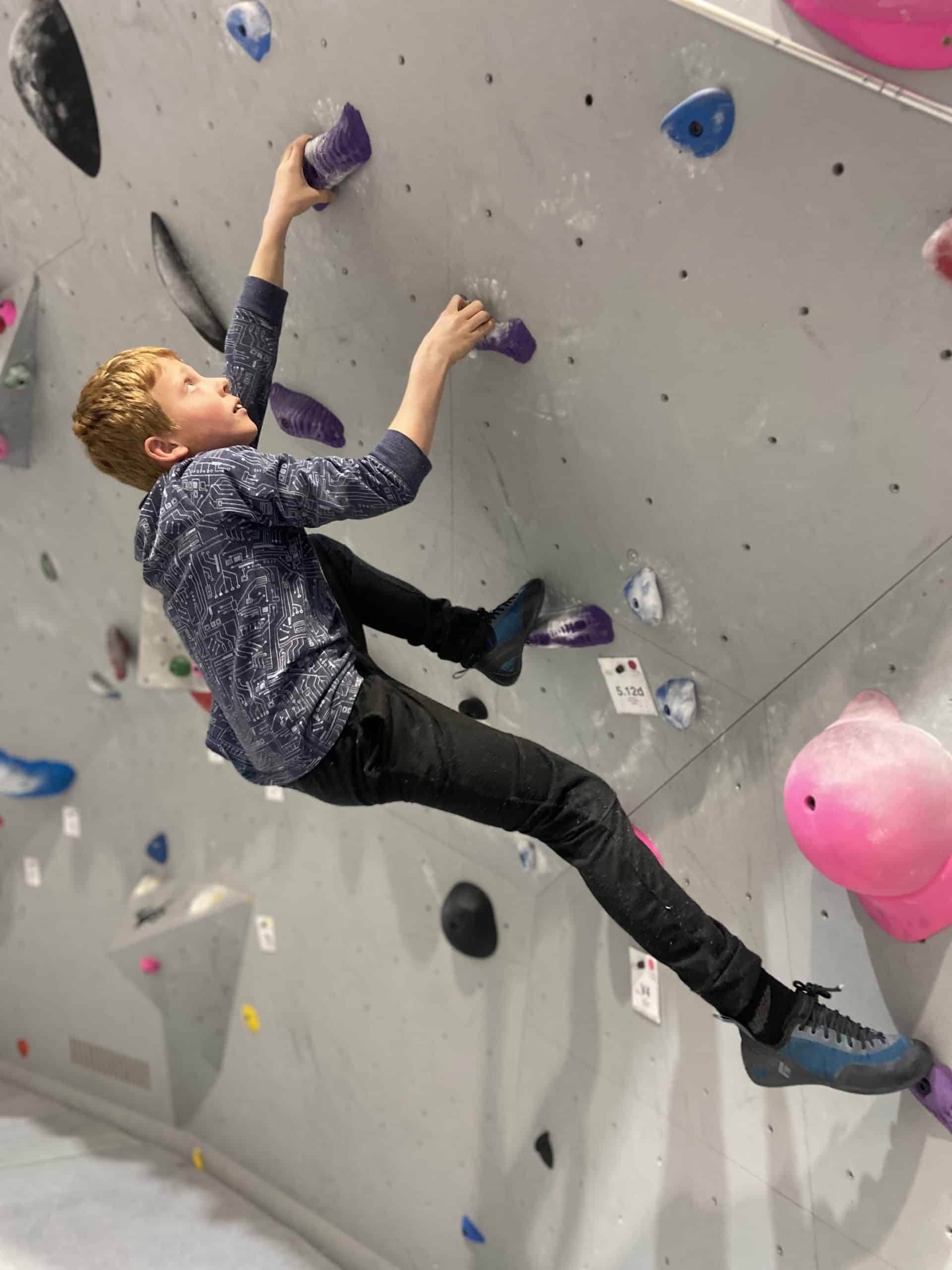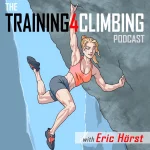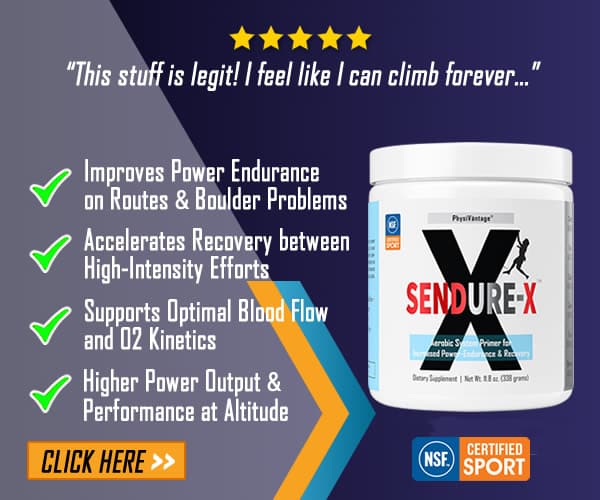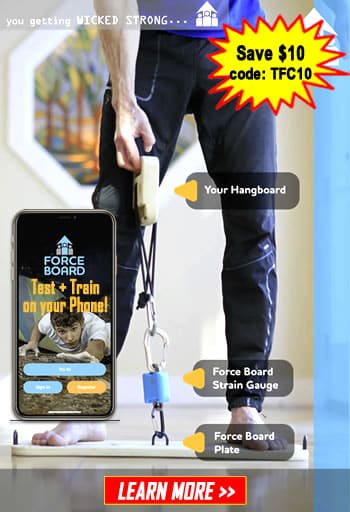Climbing is first and foremost a sport based on skill. It should always be treated as such, especially when dealing with youth climbers. Much like golf, climbing requires proficient use of a wide range of skills, while strength and power are secondary.
(This article was originally published in January 2015.)
Consequently, skill development is paramount for novice climbers (of all ages). Extensive strength training is unnecessary and inappropriate early on. Interestingly, preteen brains are predisposed to prolific learning of motor skills, and so they have a time-limited gift to develop and refine climbing skills at a much higher rate and with greater ease than adults.
Climbing in general is extremely intuitive, and many youngsters might seem to be able to successfully teach themselves. There are, however, many complex techniques and skills that novices are unlikely to discover on their own. This is where knowledgeable climbing coaches are indispensable. They can present new skills to be learned with proper form and in a logical progression, all the while keeping the climbing activities safe and fun.
The Learning Process
A good coach will have a lesson plan of sorts that begins with a warm-up period. From there, the session progresses through several periods focused on learning new skills, practicing previously learned skills, engaging in some form of “performance climbing” (attempting to climb entire roped routes or “limit” boulder problems). It can conclude with some basic conditioning exercises and cool-down stretching. The coach will engage the students throughout, actively correcting lackluster form and inefficient movement patterns.
Feedback is essential to the learning process. The coach must help direct effective practice that will encode fundamentally correct movement skills into the brain and foster a high level of climbing efficiency, rather than allowing youth climbers to muscle through a move with poor technique and call it “okay.” As with learning any physical skill, it’s paramount that young climbers avoid encoding sloppy, inefficient ways of moving that will be more difficult to correct once they are firmly wired in the brain. Again, golf is a good analogy. Many adult golfers futilely struggle to overcoming technical flaws that were deeply encoded during their formative days.
Range of Climbing Experience
Longer-term, youth climbers should be encouraged to explore unfamiliar terrain. An early focus on slab climbing should expand to the more challenging terrain of overhanging walls and bouldering caves. When they’ve achieved a high level of proficiency at face climbing, youths should practice cracks and corners, which demand acquisition of new skill sets.
An early focus on bouldering and toprope climbing should eventually progress to an introduction to lead climbing. This is obviously a risky, headier form of climbing that is not to be rushed into prematurely. Some strong, talented youth climbers will develop the skill and confidence to begin lead climbing by age eight or nine. Others may take years longer. There are no rules or specific age when a climber is ready to lead. Obviously this is a critical decision for the coach and parent to make together, and not something the youth climber should unilaterally decide.
Commitment and Dedication
A final and most important coaching matter involves climbing frequency and degree of dedication to the sport. Understandably, many youths fall in love with climbing—to the point that they would like to make it their one and only recreational/sporting activity.
It’s my opinion, however, that single-sport specialization should be discouraged before the age of thirteen (and ideally delayed until age 16 or older). Research has identified a finite “golden period” of accelerated acquisition of motor abilities that lasts only through the early teenage years. This period of heightened neurodevelopment should be used to learn a wide range of sports skills. This can include running, jumping, flipping, throwing and/or shooting a ball, swinging a club or racquet, swimming in a pool, among many other wonderful and pleasurable ways to engage in skilled movement. A youth’s brief opportunity to learn at hyperspeed should be invested in learning more than just how to dance and pull up a rock wall. It’s my experience that young athletes can come to climb at a national-class level (or higher) while at the same participating in—and perhaps excelling at—one or two other sports and in school, as well!
Youth Training Articles by Hörst (please share with fellow coaches and youth climbing parents)
- Overview of Training for Youth Climbers
- Cognitive Development of Youth Climbers
- Age-Appropriate Strength Training for Youth Climbers
- Youth Climbing Injuries and Prevention
Copyright © 2000–2022 Eric J. Hörst | All Rights Reserved.

